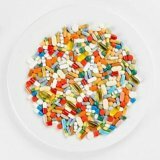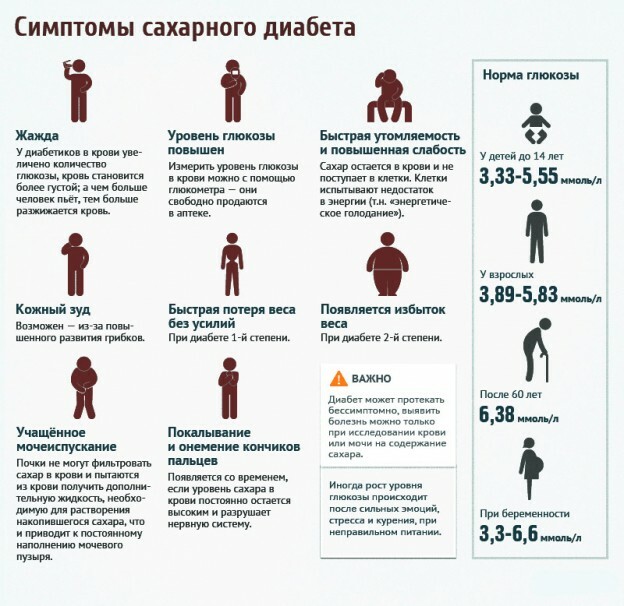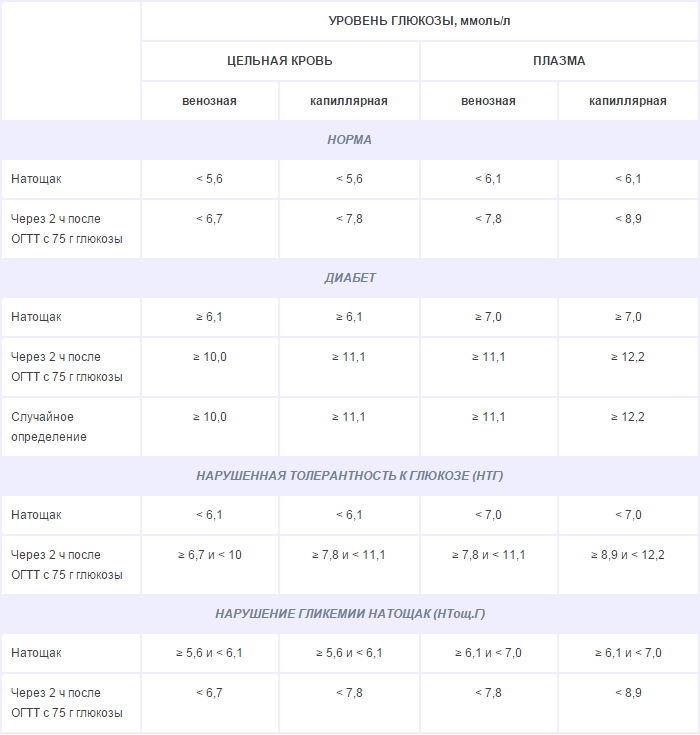Treatment of diabetes mellitus with tablets
 Tablets that are used in the treatment of type 2 diabetes do not contain insulin. The most common tablets are referred to the same chemical class and are called sulfonylureas( SM).Their main mechanism of action is to stimulate the formation of insulin in the pancreas.
Tablets that are used in the treatment of type 2 diabetes do not contain insulin. The most common tablets are referred to the same chemical class and are called sulfonylureas( SM).Their main mechanism of action is to stimulate the formation of insulin in the pancreas.
The group of biguanides is one of the most rarely used tablets. They usually increase the absorption of sugar by cells and, mainly, are prescribed only to patients with type 2 diabetes, which is combined with obesity, because some patients can not successfully lose weight in any way.
These two groups of tablets are effective until patients continuously develop a certain amount of insulin. In a large number of patients with type 2 diabetes, these very tablets may soon cease to be effective, and then already treatment with insulin becomes the only alternative. In addition, there are such periods - for example, in the period of serious illnesses - when previously successful treatment with pills should be for a short while, replaced by insulin treatment. The treatment of diabetes mellitus with tablets takes place in stages and necessarily under the supervision of the attending physician.
Treatment of diabetes is possible due to oral antidiabetic drugs. Oral antidiabetic drugs are quality hypoglycemic tablets that help people whose body can still produce a certain amount of insulin( this is a large number of people with diabetes), and also monitor the desired level of sugar in the blood. These medications are usually prescribed to people who have type 2 diabetes in parallel with constant exercise and with a special diet. Some of these tablets are given in combination and combination to achieve the best control of blood sugar levels.
Know that people who have type 2 diabetes have two problems that usually lead to increased blood glucose levels:
- The required amount of insulin is not produced to move the glucose inside the cells, as it should ideally be.
- Cells in the body are made insulin resistant( insulin resistance), so they can not properly absorb glucose.
Then, in patients with type 2 diabetes, what is called beta-cell deficiency begins to develop. This means that the pancreas cells that produce insulin can not release it already in response to the rising sugar level. Consequently, such people need either injections of insulin, or a combination with antidiabetic tablets, or monotherapy.
Antidiabetic tablets are divided into different categories based on their belonging to one of the types.
Tablets and their scope
1. Sulfonylureas. This kind of tablets reduces blood sugar by stimulating the pancreas itself to release a certain amount of insulin, which helps to reduce diabetes. The first created preparations of this group -Diabinese, Dymelor, Tolinase and Orinase - were not taken so widely, because they were weak and short-acting than other new drugs of sulfanylurea. Such preparations were gliclazide( Diabeton MR, Minidiab), glimepiride( Glirid, Amaryl), glibenclamide( Maninil).Medicines of such a group can cause a certain decrease in the level of glycosylated hemoglobin by 1 or 2 percent.
2. Biguanides. These tablets improve the ability of insulin to move sugar into cells, mainly in muscle. They most often stop the release of a certain amount of sugar by the liver. Biguanides should not be used by people who have renal or heart failure because they increase the risk of release and a decent accumulation of acid bases. They can also lower the level of HbA1c by 1 or 2 percent. This group includes metformin( Siofor, Glucophage, Metformin Hexal).
3. Inhibitors of alpha-glucosidases, including preparations of miglitol and acarbose( Glucobay).These drugs should block enzymes that help in the assimilation of starch, reducing the level of sugar in the blood. Tablets from this series can cause flatulence and diarrhea. They should reduce the level of glycosylated hemoglobin by 0, 5 or 1 percent.
4. Thiazolidinediones. These tablets increase the effectiveness of insulin in fat and muscle tissue. They reduce the amount of sugar and make fat cells the most susceptible to the effects of insulin. Avandia and Actos are one of the representatives of this group. When using these drugs, the level of HbA1c decreases by 1 or 2 percent. The effect of these drugs on reducing sugar levels begins only a week after taking the medication. These drugs should be used carefully by people with heart failure. If you use drugs from this group, then the doctor will have to constantly check the function of the liver with periodic blood tests.
5. Alpha-glucosidase inhibitors, This drug blocks those of the enzymes that are used in the assimilation of starch, slowing blood sugar levels. Treatment with tablets from this series subsequently cause flatulence and diarrhea. They reduce the level of glycosylated hemoglobin by 0, 5 or 1 percent.
Studies show that some antidiabetics help prevent diabetes symptoms and complications associated with it. Precose and Metformin after studies showed a decrease in the developmental possibilities in patients with type 2 diabetes, especially with lifestyle changes, for example how to correctly diet and constant exercise. Actos shows a reduced risk of heart strokes, seizures and premature death in people with type 2 diabetes. Scientists are still investigating the prophylactic properties of various drugs.


